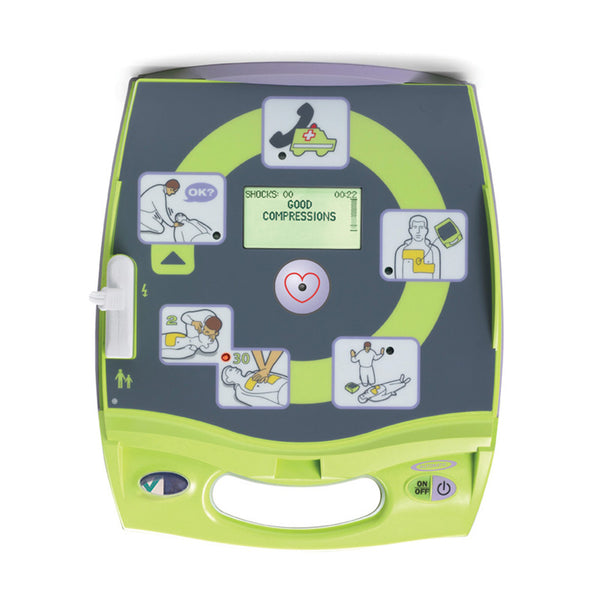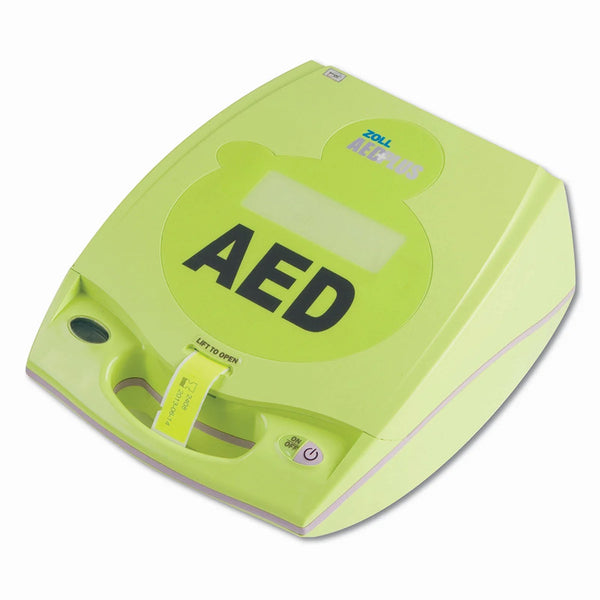Seven out of ten of the 30,000 people who suffer a cardiac arrest in the UK every year are saved through the use of defibrillation to restore their heart’s natural rhythm.
Cardiac arrest is the medical term used to describe what happens when the heart stops pumping blood around the body. It is a life-threatening condition, and its most common cause is known as ventricular fibrillation, during which the heart quivers or ‘fibrillates’. The most effective way to restore the correct rhythm is with an Automated External Defibrillator, or AED.
What is a defibrillator?
It’s a battery-powered device proven to increase survival rates in patients suffering a cardiac arrest. Automatic and semi-automatic defibrillators deliver a controlled electric shock to the heart through pads applied to the skin.
They are becoming increasingly common not only in the workplace, where it’s recommended that no-one should be further than two minutes from one, but also in schools, colleges, clubs and village halls.
Batteries are normally supplied with the device, and if the machine is not used, the battery life can be up to five years. The machines run a ‘self check’ routine every day, and show warning lights if they require attention.
Automatic defibrillators deliver the shock when they detect it’s necessary; semi-automatic ones tell someone else to deliver the shock.
Defibrillator training
Using a defibrillator is not restricted to people with medical training. First Aiders can do it, as can many others, using the clear guidance supplied with the machine.
The models we offer can be used by people with little or no training, since the device won’t work on a patient who does not need its intervention.
Specific details about each product are shown on the individual product pages.



